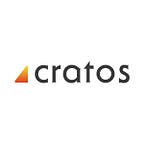All you need to know about Stablecoins
Recently, stablecoins have gained a lot of interest among the representatives of the financial industry. What is stablecoin? What are the types of stablecoins and how are they backed? What are their positive and negative sides? We will give answers to the questions in this article. We will also pay attention to an important question: can an ordinary inexperienced investor store his funds, not in dollars, but USDT or something like it?
What is stablecoin and how is it backed?
A stablecoin is a type of cryptocurrency whose value is tied to an external asset (such as the US dollar or gold) This allows the price to stabilize.
There are four main types of stablecoins in total. They differ in the basic collateral structure: fiat-backed, crypto-backed, commodity-backed, and algorithmic.
Fiat-backed. The most popular stablecoins are backed by fiat currency at a 1: 1 ratio. Fiat collateral remains in reserve with a central issuer or financial institution. It should remain proportional to the number of stablecoin tokens in circulation.
Cryptocurrency-backed. They are backed up with some other cryptocurrency as collateral. This is possible in a chain using smart contracts instead of the participation of a central issuer. Stablecoins of this type is also characterized by excess collateral. This is to protect against price fluctuations in the highly volatile crypto market.
Algorithmic. Algorithmic stablecoins do not use fiat money or cryptocurrency as collateral. Their price stability is the result of the use of specialized algorithms and smart contracts that govern the supply of active tokens.
Commodity-backed. Commodities here are precious metals, oil, real estate, etc. The most popular backed commodity is gold. These stablecoins facilitate investment in assets that might otherwise not be available locally.
Are stablecoins a good investment?
This is the question that most people want an honest answer to.
One of the main reasons for interest in stablecoins is their relative stability. They are also considered safer than the stock market. They are available on many exchanges and are capable of being stored in a digital wallet. Of course, it is much easier to use USDT to buy cryptocurrency than to use USD or another fiat currency.
Do stablecoins have a promising future?
Probably yes. Stablecoins are the kind of cryptocurrencies that have consistently served their purpose for several years.
However, stability doesn’t equal the meaning of good investment. Investors need asset prices to rise to make profits. Not everything is so simple with stablecoins.
Why did they become popular? Pros and cons of stablecoins
Fluctuations in prices for stablecoins remain constant due to their relation to fiat currencies, etc. This fact distinguishes them from other cryptocurrencies. Stablecoins are considered a very safe long-term instrument of investment for this reason. However, they are not perfect. Where there are positives, there is room for negativity.
Pros:
- The value of stablecoins will remain stable even after five years, thanks to the reinforcement of low-volatility assets. This guarantees to reduce losses in the event of a significant drop in the market. We’re talking about a great way to save value, but not a speculative investment.
- Stablecoin makes international transactions easier. The costs of their implementation are minimal, and the conversion of real money into cryptocurrency is simple.
- Stablecoins make it easy for experienced traders to buy cryptocurrencies at the lowest price. This allows them to quickly capitalize on a market downturn.
- Some of the coins of this type improve the liquidity of cryptocurrencies and make the use of cryptocurrencies much easier for a wide range of users.
- It is possible to increase the degree of decentralization of the cryptocurrency exchange due to stablecoins. Stablecoins allow this since the volatility of bitcoin prices does not allow new investors to invest in their currency. Stablecoin will be a good investment option.
- The use of stablecoins provides more convenience as opposed to more risky crypto assets. Transparency is provided by stablecoins, which are backed by regular audits.
Cons:
- Fiat-backed stablecoins are considered the most persistent of the stablecoins. This is good for short-term market activity. But seasoned long-term investors rarely include stablecoins in their portfolios. The stability of this type of asset is disadvantageous for a long-term investment strategy. Most likely, there will be no losses, but you also most likely will not get a tangible increase in the long term.
- Stablecoins are tied to low-volatility assets. Their price does not exceed the real value of the assets linked to them. The implication is that the coin will not be as profitable as a regular cryptocurrency.
- Stablecoins are not original assets, regardless of their proximity to the US dollar, precious metals, or bitcoin. Many economists question the authenticity and real value of some stablecoins. There is a possibility of litigation soon.
- Regulators still have complaints about stablecoins. There is a feeling that some currencies are manipulating the market.
- Stablecoins are decentralized and can be stolen from your bank account. And the owners remain confidential because the provisioning system is completely decentralized.
- The value of stablecoins depends on the secured assets. Thus, the probability of bankruptcy of USD projects is higher.
Conclusion
The world of cryptocurrencies is known for its extreme volatility and attractiveness for short-term and long-term investors. Stablecoins bridge the gap between fiat currencies and cryptocurrencies. These are price-stable digital assets that work like fiat, but keep cryptocurrencies mobile and useful. Accordingly, stablecoins represent a new solution to the problem of cryptocurrency instability: price stability is built directly into the assets themselves.
Thus, as long as the cryptocurrency market remains relevant, stablecoins will remain a valuable digital currency.
